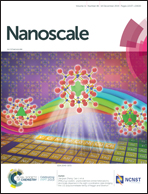Revealing inconsistencies in X-ray width methods for nanomaterials
Abstract
Since the landmark development of the Scherrer method a century ago, multiple generations of width methods for X-ray diffraction originated to non-invasively and rapidly characterize the property-controlling sizes of nanoparticles, nanowires, and nanocrystalline materials. However, the predictive power of this approach suffers from inconsistencies among numerous methods and from misinterpretations of the results. Therefore, we systematically evaluated twenty-two width methods on a representative nanomaterial subjected to thermal and mechanical loads. To bypass experimental complications and enable a 1 : 1 comparison between ground truths and the results of width methods, we produced virtual X-ray diffractograms from atomistic simulations. These simulations realistically captured the trends that we observed in experimental synchrotron diffraction. To comprehensively survey the width methods and to guide future investigations, we introduced a consistent, descriptive nomenclature. Alarmingly, our results demonstrated that popular width methods, especially the Williamson–Hall methods, can produce dramatically incorrect trends. We also showed that the simple Scherrer methods and the rare Energy methods can well characterize unloaded and loaded states, respectively. Overall, this work improved the utility of X-ray diffraction in experimentally evaluating a variety of nanomaterials by guiding the selection and interpretation of width methods.



 Please wait while we load your content...
Please wait while we load your content...